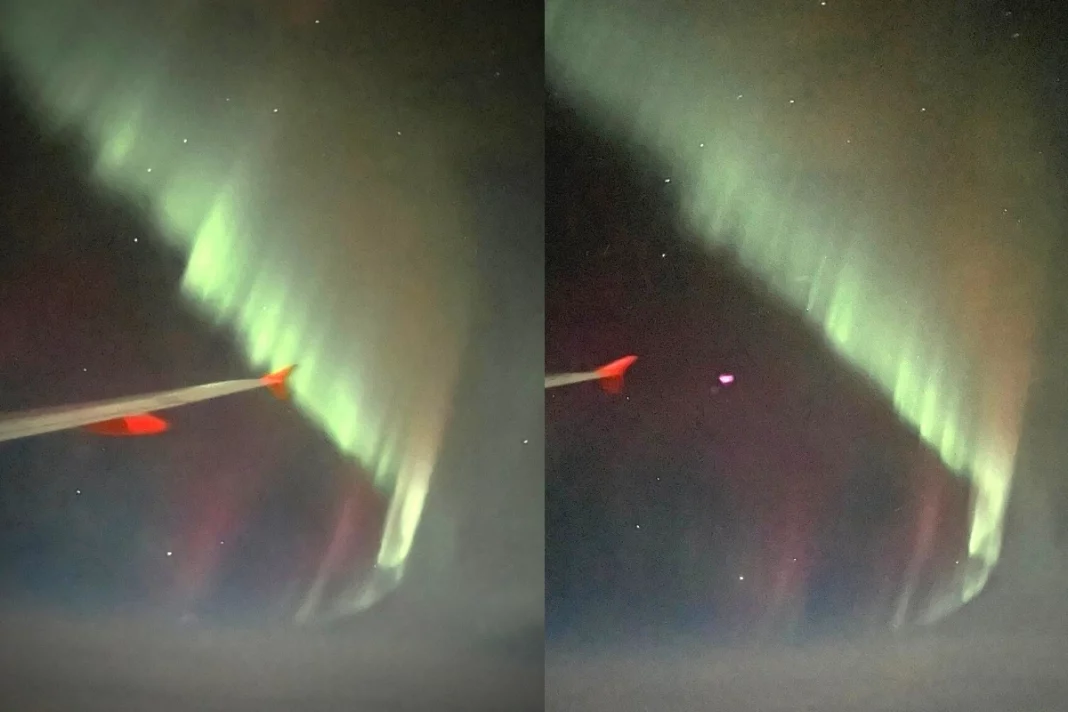Viral Photo: To ensure that everyone on board could see the Northern Lights on February 27, an easyJet pilot performed a 360-degree turn over the water. Due to “transitory cloud breaks,” which were visible in the night sky, the plane travelling from Reykjavik, Iceland, to Manchester Airport was able to get a bird’s eye view of the natural phenomenon. Green, purple, and pink streaks in the sky were captured in photographs by passengers.
Twitter Users React to Pilots’ Maneuver Mid-Flight
Photographer Adam Groves, who was travelling with the crew, claimed that they had had a small chance of seeing the Northern Lights because of the favourable aurora forecast. But since there was little cloud cover in Iceland, they couldn’t see them from the ground. The pilot gave everyone a chance to see the lights by turning off all of the lights and performing a 360-degree loop midway through the flight. FlightRadar24 captured the flight path, which reveals the path over the water and the precise location of the plane’s air loop.
Capturing Stunning Pictures of Northern Lights
Mr. Groves tweeted his photos of the amazing natural phenomenon and thanked the easyJet pilot for allowing all passengers to witness it. Some Twitter users questioned whether pilots require authorization to perform a 360-degree turn in midair. FlightRadar retorted that pilots should alert air traffic control to make sure that such a manoeuvre is safe to execute.
Photos went viral
It was a special occasion and the second of two nights when the UK could see the Aurora Borealis. The best location to view the natural phenomenon was in northern Scotland, but on Sunday night, sightings were reported in Cornwall and Kent in southern England. Mark Gibbs, the Met Office’s head of space weather, explained that Sunday night’s coincidence of ideal conditions, including a cloudless sky, clear air, and a dim moon, allowed people to see the Northern Lights over considerable distances with little light pollution. The activity, according to Mr. Gibbs, was caused by a solar storm, which is common at this time in the solar cycle.
Keep watching our YouTube Channel ‘DNP INDIA’. Also, please subscribe and follow us on FACEBOOK, INSTAGRAM, and TWITTER.


